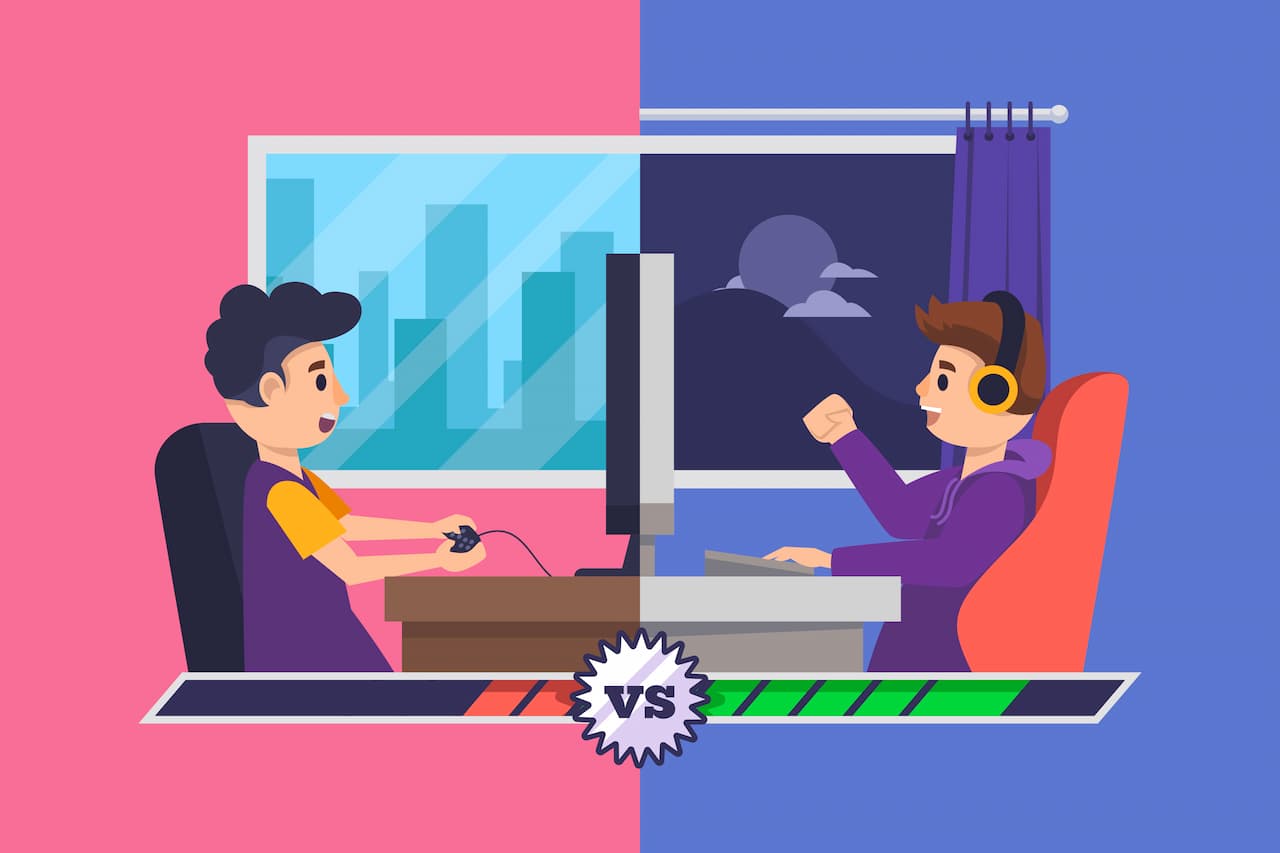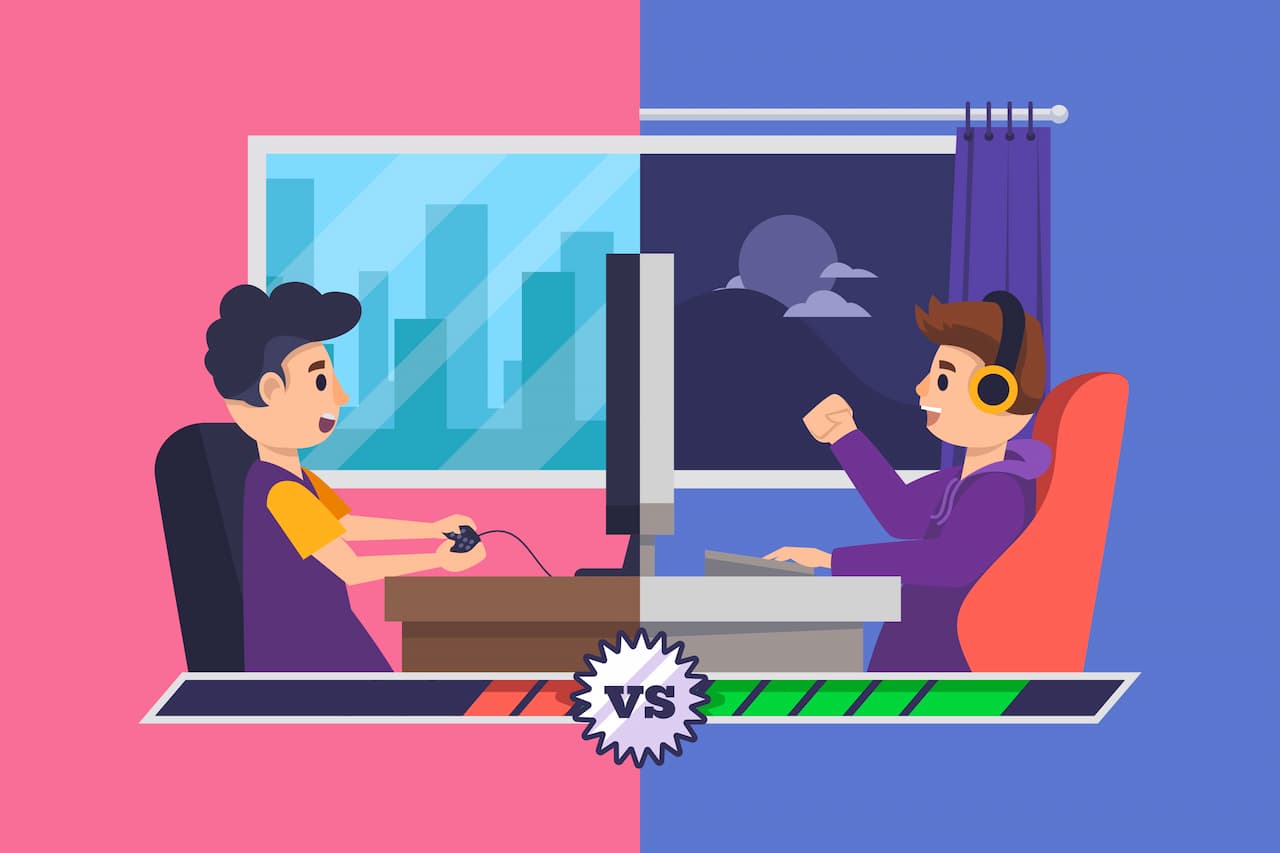
Top 10 Popular Languages for Game Localization: Trends and Insights
Localizing your game into these top game localization languages will open doors to tap into the global market. Find out what they are here!
What are the most popular game localization languages? As the world of gaming flourishes becoming a worldwide phenomenon, it’s important to start localizing a video game into different languages. But, the question is which language to choose that would probably bring more revenue than others?
In this article, we’re going to explore the top 10 video game languages that publishers and game developers use when localizing their games in 2024. However, before diving into the popular video game languages, let’s dive into the tips to choose the right language for your game localization.

Choosing the Right Game Localization Languages
According to Statista, the global revenue in the gaming industry was expected to continuously grow between 2023 and 2027 by a total of 197.8 billion U.S. dollars (+40.32 percent).
That number is a significant consideration to start leveraging your video game worldwide. Choosing English might be the easiest way but getting your game localized is still the best option. Therefore, localization in games would be a good start to gather a wider audience in the global market.
Selecting the appropriate languages for game localization is not a one-size-fits-all process. Instead, your decision regarding which languages to target should align with your business objectives, revenue strategy, the unique features of your game, and the demands of the market. Let’s find out what to consider below:
Align the Game Localization Goals with The Revenue Model

Before embarking on game localization, it's crucial to align your goals with the revenue model. Basically, there are three common models that game publishers have which are the subscription model, in-game purchases, and ad revenue.
If your game relies on a subscription model, consider languages spoken in regions with a higher potential for subscription-based gaming. Languages like English, Chinese, Japanese, and Korean often cater well to this model due to their strong gaming communities and purchasing power.
For games that generate revenue through in-game purchases, focus on languages with a history of active microtransactions. Understanding the spending habits of players in regions using languages like Spanish, Russian, and Portuguese can be instrumental in deciding which languages to localize for.
Games that generate income primarily through ads should prioritize languages spoken in regions with substantial ad markets. In this case, languages like English, Chinese, and Spanish may be suitable choices.
Analyze the Competitors
To make informed decisions about which languages to target for localization, a competitive analysis is essential. Knowing who will be your direct competitors is important to decide whether it is reasonable to compete against the best player in a region - be realistic.
Chances are you might face a game localization company with stronger prospects and a higher localization budget. If the competition is off the charts for your game genre, it's better to find another territory where your game would perform better.
However, it's worth noting that competitor analysis also gives you better opportunities. You can avoid any pitfalls or issues faced by competitors during localization, so you can avoid making the same mistakes.
Check Different Market’s Expectations
When it comes to localization in games, each market has its unique preferences and expectations. In some cases, players from certain areas prefer their video games to be localized partly. Meanwhile, others expect them to be fully localized. This preference can be good news for game publishers who want to do localization on a tight budget.
Regardless, localizing a video game takes different levels, meaning that developers can stop at one level or go all the way. However, the deeper it gets, the higher the budget needed for game localization.
Read also:Translation and Localization: Your Key to International Success
Top 10 Popular Game Localization Languages
It is common to divide the most popular game localization languages into two groups. There are CJK and EFIGS languages. CJK languages stand for Chinese, Japanese, and Korean language which are the top three choices for expanding games in the Asian region.
Meanwhile, EFIGS languages stand from English, French, Italian, German, and Spanish which are go-to options when game publishers try to reach most of the European market. Below, we’ll start with CJK languages, continue with the EFIGS, and other top languages for game localization.

Chinese
With a population grows over 1.4 billion people, China remains one of the world's largest gaming markets. Localization into both simplified and traditional Chinese is crucial for tapping into this vast audience. Therefore, there are quite a large number of games in Chinese
The linguistic and cultural differences between simplified and traditional Chinese are significant, so developers must carefully consider which version to use for their game. However, the simplified Chinese is still the most commonly spoken dialect in China.
Besides all the challenges related to the language, entering China isn't easy. All video games seeking entry into the Chinese market must go through an official approval procedure, which may extend for several weeks. Therefore, game publishers should fulfill numerous localization prerequisites to effectively access the market.
Japanese
Japan is renowned for its rich gaming culture, including its massive gamer community. Japanese players have high expectations when it comes to game quality and localization. In fact, Japanese developers were the pioneers of game localization.
Localizing a video game into Japanese can be a challenging task, but it's well worth the effort. Similar to Chinese, it takes a lot of effort to translate into Japanese and even many key players in the gaming industry failed to do so.
Read also: Impact of Animes In The Gaming Industry
Korean
The next popular game localization language to touch the Asian market is Korean. South Korea is another gaming powerhouse, with a passionate gaming community and a strong esports presence.
Although Korea has a relatively small population, its gaming community can be as dedicated as the Japanese. Moreover, gamers in South Korea have high standards for localization quality, so it's crucial to provide a culturally relevant and engaging experience to succeed in this market. English Unsurprisingly, English is the most common video game localization language. As one of the most widely spoken languages globally, translating games into English opens doors to a vast and diverse player base. English localization is often the first step in making a game accessible to international audiences and granting access to large gaming markets.
English-speaking countries, including the United States, the United Kingdom, Canada, and Australia, are all major players in the gaming industry. Ensuring that your game is available in English is practically mandatory for global success.

French
French is not only the official language of France but is also widely spoken in several African and Caribbean countries, such as Belgium and Switzerland. Therefore, choosing French as one of the game localization languages opens doors to many potential locales.
France itself has a thriving gaming community. Entering this market has high competition with other gaming companies. Therefore, you might want to consider and redefine the goal of localizing video games in this language.
Italian
Italy, with its rich history and culture, has a growing gaming community that developers should consider when localizing their games. While not as large as some of the other markets on this list, the Italian market still offers significant potential for growth.
It's still considered one of the most popular game localization languages despite its older glory. Translating your game into Italian can make it more accessible and appealing to Italian players. It's also worth noting that Italian gamers have high expectations when it comes to game localization.
Read also:Ensuring Data Privacy and Security in the Global Translation Project German
Following English, German is the most popular game localization language for European countries. Localizing games into German allows developers to tap into this market and reach German-speaking players in Germany, Austria, Luxembourg, and other German-speaking communities.
Quality in German localization is essential to cater to this audience effectively. Moreover, many German speakers can communicate in English very well. Therefore, game publishers might want to find the right approach that matches budget and priorities before going all German.
Spanish
Spanish is the second most spoken language in the world by native speakers, making it a top priority as a game localization language. The Spanish-speaking gaming community is enormous and diverse, with significant markets in Spain, Latin America, and the United States. The language even takes up to 20% of the US population.
A well-executed Spanish localization can significantly expand a game's reach and popularity in those regions. However, it's important to note that there are various Spanish dialects in different forms and shapes. So, it takes careful consideration to choose the right dialect based on the targeted area for expansion.
Russian
Recently, the Russian gaming market has been growing steadily. It's crucial for game publishers to consider localizing their games to Russia to capitalize on this trend. Moreover, Russian appears as the third most common language used in Steam after English and Simplified Chinese (2022).
Therefore, Russia is a potential market, especially for a video game that is to be released on Steam. Russia has a substantial player base, and it's an emerging market with significant opportunities for growth. Effective Russian localization can help a video game stand out in this competitive landscape.
Portuguese
Portuguese is the official language of Portugal and Brazil, both of which have rapidly expanding gaming communities. Localizing a video game into Portuguese helps reach players in these countries, as well as Portuguese-speaking communities in other parts of the world.
Brazil, in particular, has a vibrant gaming scene. However, don't reuse the translation of European Portuguese for the Brazilian Portuguese as they are quite different.
Why Not Focus on Just The Most Profitable Languages?
After looking at the top 10 game localization languages, some may wonder for why not just focus on the most profitable languages, such as English or Chinese only. Focusing solely on the most profitable languages may seem like a sound business strategy, but it overlooks several critical aspects of game localization.
The most profitable languages are often the most competitive. Saturating these markets with your game might lead to fierce competition and escalating user acquisition costs. Diversifying into other languages can offer a less competitive landscape and help establish a foothold in emerging markets.
While countries like Thailand, Indonesia, Saudi Arabia, and Hongkong seem not as promising as now. These countries are expected to increasingly grow in the future, considering the number of downloads. Therefore, being present in multiple languages would position yourself for long-term growth and adaptability to changing market dynamics.
Conclusion
The list above shows the most popular choices for game localization languages, but the world is a vast and diverse place. Developers often need to consider additional languages depending on the specific regions they aim to target. Further considerations like cultural nuances, slang, humor, and regional preferences are also important to seamlessly deliver a good localization.
In addition, while pursuing profitable languages is important, it's also essential to consider a holistic approach to game localization that factors in market diversity. Diversifying your language strategy can lead to a more robust and sustainable presence in the global gaming market.
Read also: Asian Gaming Revolution: A Look into the Future of Gaming Entertainment